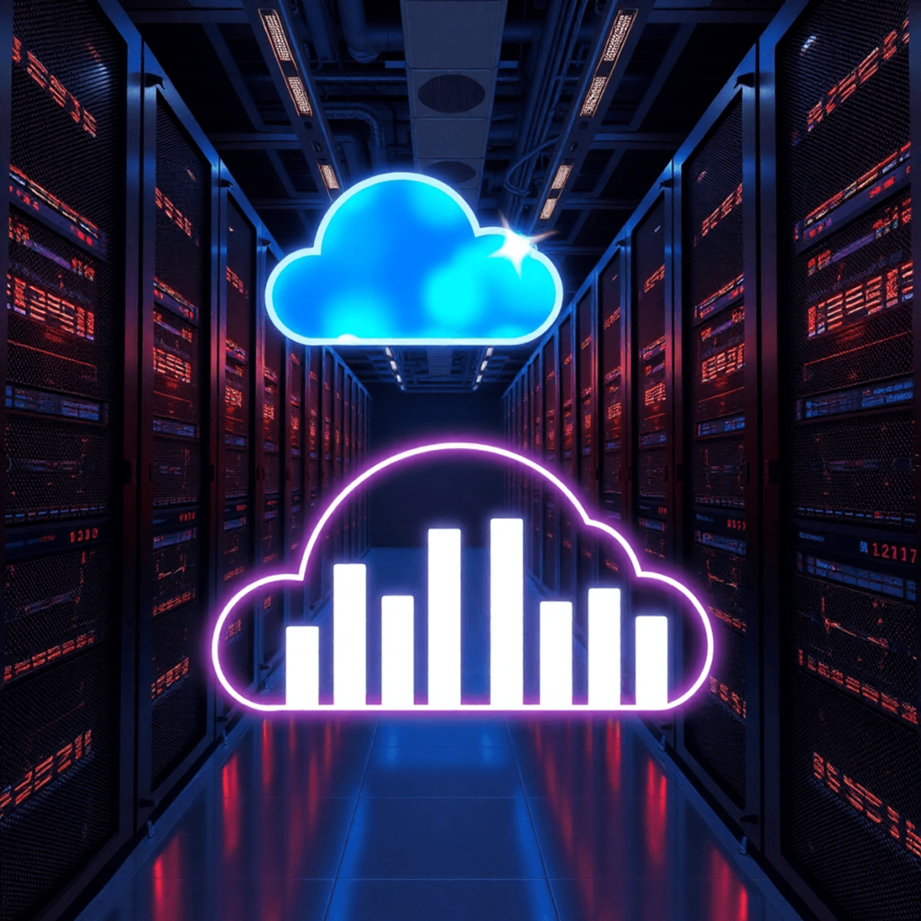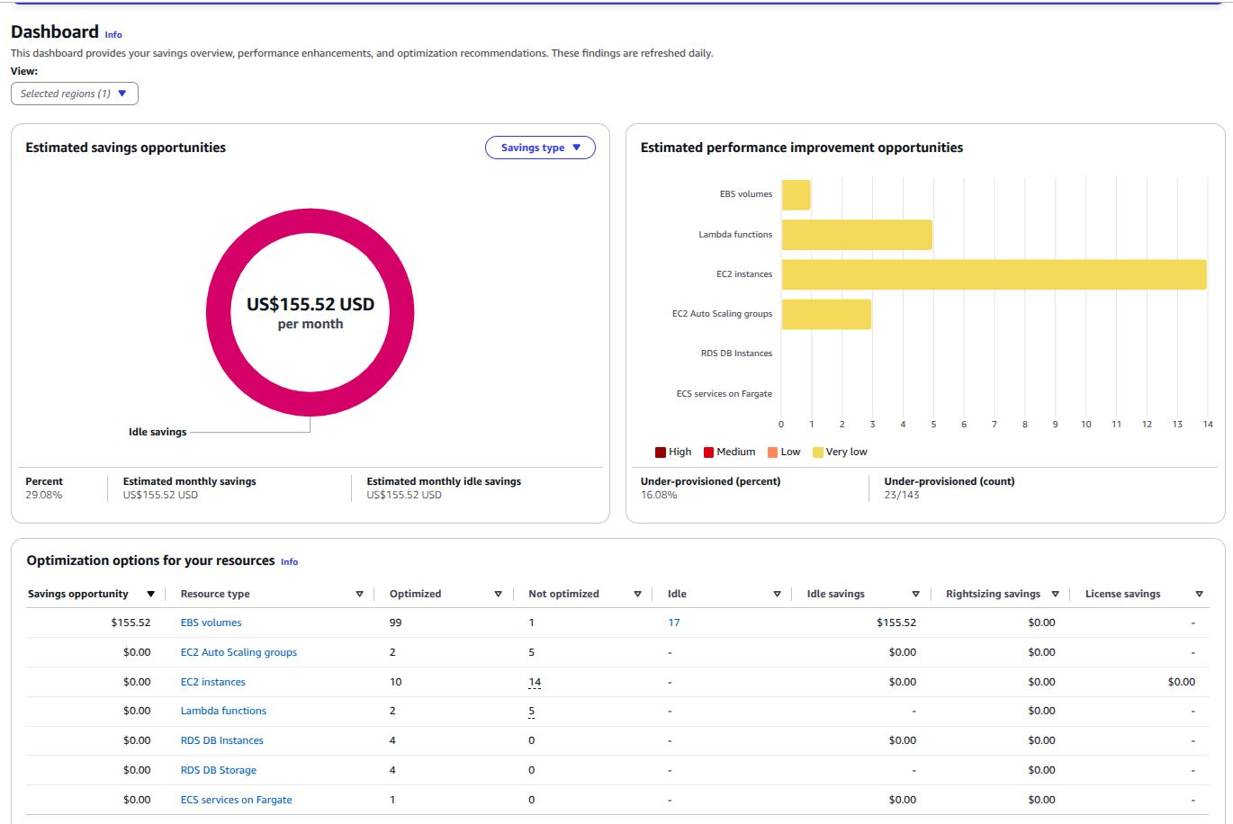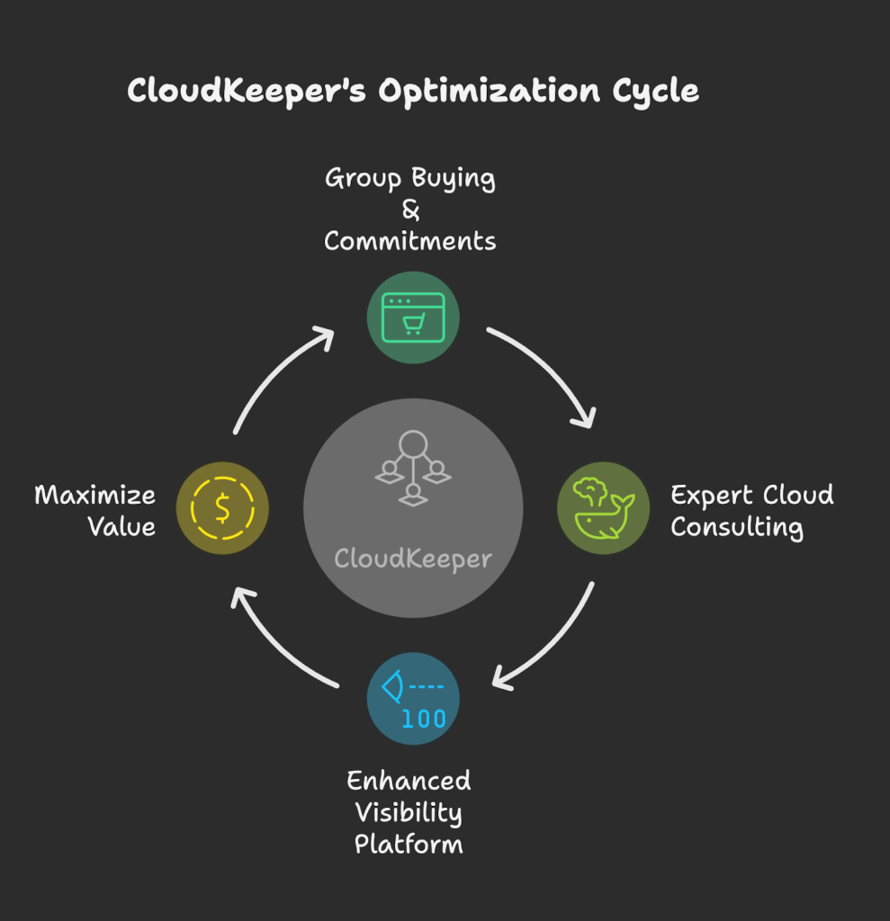Reclaiming Cloud Efficiency: Strategic Rightsizing for Business Impact
Introduction
Cloud cost optimization is a vast and evolving discipline, but at its core, it starts with visibility. You can’t optimize what you can’t see. So, gaining granular insight into your cloud usage and billing is the basic foundation. You’re not the only one who has ever thought, “This bill feels too high,” after seeing your AWS bill. Overprovisioned resources, or simply using larger, more powerful services than you require, are one of the most frequent causes of cloud costs going out of control. This is where rightsizing is useful. In this blog, we will understand what rightsizing is. Its importance and how we can achieve it? We will also see what AWS Compute Optimizer is and how Cloudkeeper can help you save money on your growing AWS bill. Let’s get started.
Rightsizing: What is it?
In many cases, a lack of visibility into real-time usage or poor application optimization means teams don’t even realize how much is going to waste. The process of aligning your cloud resources (like EC2, RDS, and EBS) with the demands of your workload is known as rightsizing. Avoiding squandering funds on idle or underutilised resources is the aim.

RightSizing
You are overpaying, for instance, if you are running an EC2 instance that is only utilising 10% of its CPU and memory. Without compromising performance, you could quickly move to a smaller instance type and save a substantial sum.
The Significance of Rightsizing
Rightsizing should be a part of your routine AWS housekeeping for the following reasons:
- Save Money: The cost on AWS is determined by usage. Even if you’re not using it, you pay more for the more capacity you reserve. That waste can be eliminated with rightsizing.
- Selecting what’s right for you: Selecting the appropriate instance type is sometimes more important than downsizing. For instance, despite being technically smaller, a memory-optimized instance may outperform a general-purpose one.
- Scalability: Your workloads become lighter and more scalable when you rightsize your resources. Rather than scaling vertically (by using massive instances), you can scale horizontally (by adding more smaller ones).
- Increased Productivity: Regularly checking and modifying resource sizes enhances system performance and keeps teams informed about how workloads evolve with time.
Common Domains for Rightsizing
- EC2: The largest area of savings is likely to be EC2 instances. Keep an eye on network, CPU, and memory usage. Many workloads can be migrated from x86-based EC2 instances to AWS Graviton processors (Arm-based). Graviton instances deliver up to 40% better price-performance, especially for web servers, containerized apps, and microservices, making them a powerful rightsizing strategy beyond just “downsizing.”
- RDS Databases: Many databases have too many features. Alter storage types or downgrade instance classes.
- EBS Volumes: Going to gp3 or lower volume sizes if IOPS or throughput usage is continuously low is not a brainer.
- Lambda: Too Much Memory Allotted in the Lambda Memory Settings? That might be more expensive than necessary.
- Elastic Load Balancers (ELB): Review the LCU’s and usage. Often, more data processed or high new no. Of connections results in a big load balancer cost. It can be reduced by enabling compressed responses and using the same connections for a longer duration.
- Elastic Kubernetes Service (EKS) Worker Nodes: Under-utilized EKS node groups can waste significant resources. Rightsize node instance types, and consider autoscaling to match actual container workloads.
- Auto Scaling Groups: evaluate minimum and maximum size configurations. Oversized base capacity can lead to unnecessary costs if not aligned with true usage patterns.
- Elasticache Clusters: Memory-heavy Redis or Memcached clusters may be provisioned larger than needed. Check hit ratios and evictions to adjust node sizes or counts. Migrate to AWS Valkey, which gives 20% more savings.
- S3 Storage Classes: Frequently, data is stored in the Standard class even though it could be transitioned to Infrequent Access or Glacier tiers. Lifecycle policies can rightsize storage costs automatically.
- AWS OpenSearch: Cluster sizes are often overestimated. Rightsize data node counts, index replication factors, and storage tiers to match query and ingestion rates.
Your Rightsizing Companion: AWS Compute Optimiser
AWS offers a tool called AWS Compute Optimiser to assist with all of this.
Its Function: Based on actual usage data, AWS Compute Optimiser examines your CPU, memory, disk, and network usage patterns across all of your workloads and suggests the best instance sizes and types.
Advantages:
- Use it for free. Yes, you read it right.
- Clear, visual suggestions
- Cover Auto Scaling groups, EBS, Lambda, ECS Fargate, and EC2.
- Help in performance and cost optimisation.
- It requires no additional setup and is simple to enable from the AWS Console.

AWS Compute Optimizer
CloudKeeper
CloudKeeper is a cloud cost optimization partner that combines the power of group buying & commitments management, expert cloud consulting & support, and an enhanced visibility & usage optimization platform to reduce your cloud cost & help you maximize the value from AWS, Microsoft Azure, & Google Cloud.
The Benefits of CloudKeeper
- Even though you can gain useful insights from tools like AWS Compute Optimiser, it can still be difficult and time-consuming to manually manage ongoing cost optimisation and rightsizing, particularly in large, multi-account environments. CloudKeeper can help with that.
- By analysing usage and putting savings into practice, CloudKeeper, a FinOps and cloud cost optimisation platform, helps you take charge of your AWS expenditure.

cloudkeeper
- CloudKeeper offers a team of knowledgeable cloud cost experts who assist you in organising, carrying out, monitoring, and optimising your rightsizing efforts without compromising availability or performance, in addition to offering practical suggestions. They offer expert-driven insights, validate recommendations, and help you implement them safely and effectively in place of automated changes.
CloudKeeper’s Role in Rightsizing:
- Offers comprehensive insights into underutilised resources (not just AWS native tools).
- Aids in automating rightsizing for RDS, EBS, EC2, and other platforms.
- Provides savings plan and reserved instance coverage without requiring a commitment.
- Make sure that teams and business units can see costs.
- Provides thorough action plans along with recommendations in real time.
- End-to-end support from a committed FinOps team
Conclusion
One of the easiest and most efficient ways to lower AWS expenses without sacrificing performance is through rightsizing. You can gain visibility with tools like AWS Compute Optimiser, and you can convert those insights into significant savings at scale with platforms like CloudKeeper. Make rightsizing a monthly routine if you’re serious about reducing cloud costs. Get CloudKeeper involved if you want to advance more quickly.
If you’re looking for expert technical support, consider working with official partners like CloudKeeper and TO THE NEW, who bring specialized skills, frameworks, expert FinOps and Devops Engineers, and hands-on execution to help you maximize your cloud rightsizing efforts confidently and effectively.

Contact Us
Pro tip: For long-term cost effectiveness, combine cloud-native alerts, automation, and reservation tactics with rightsizing.



